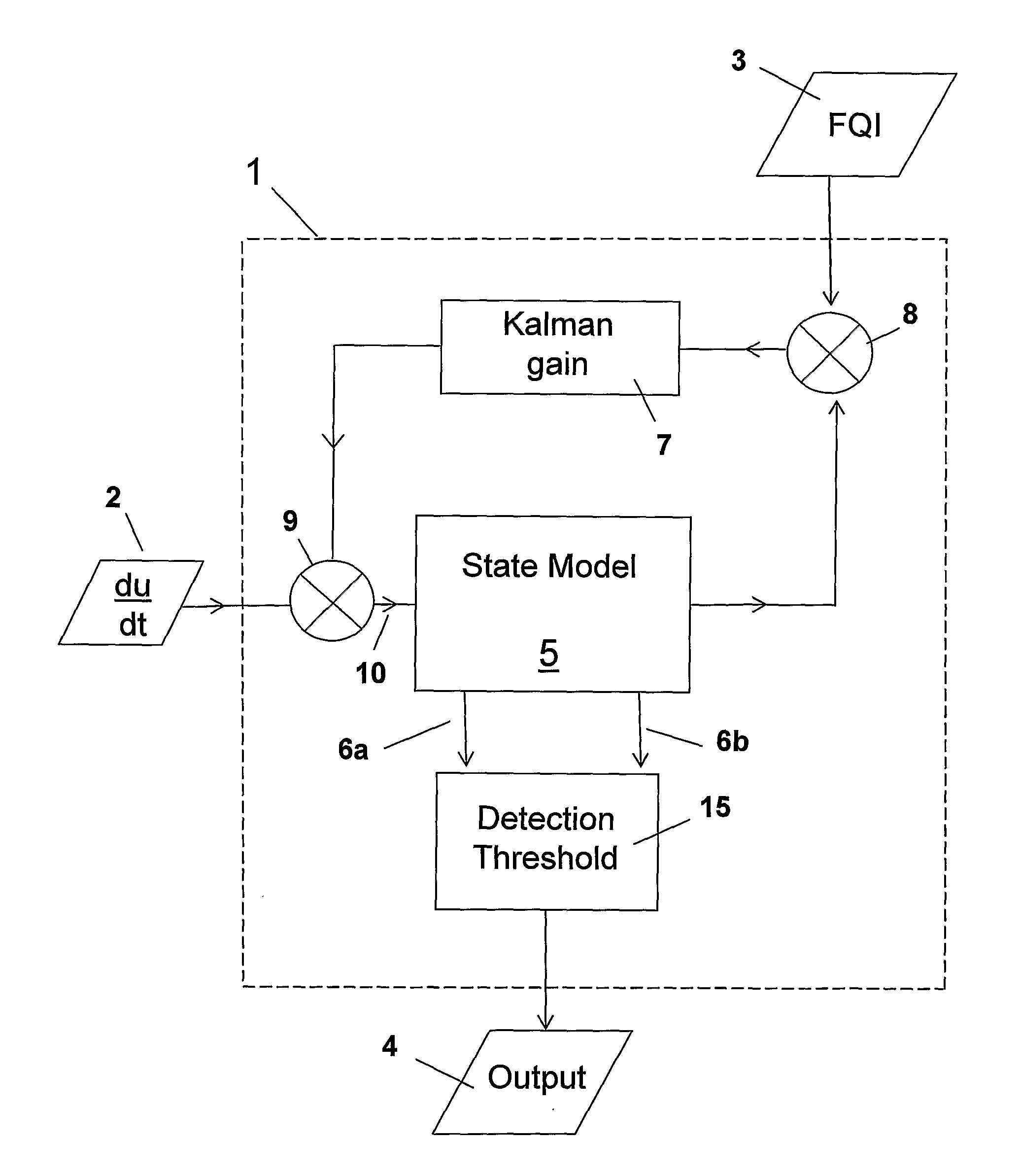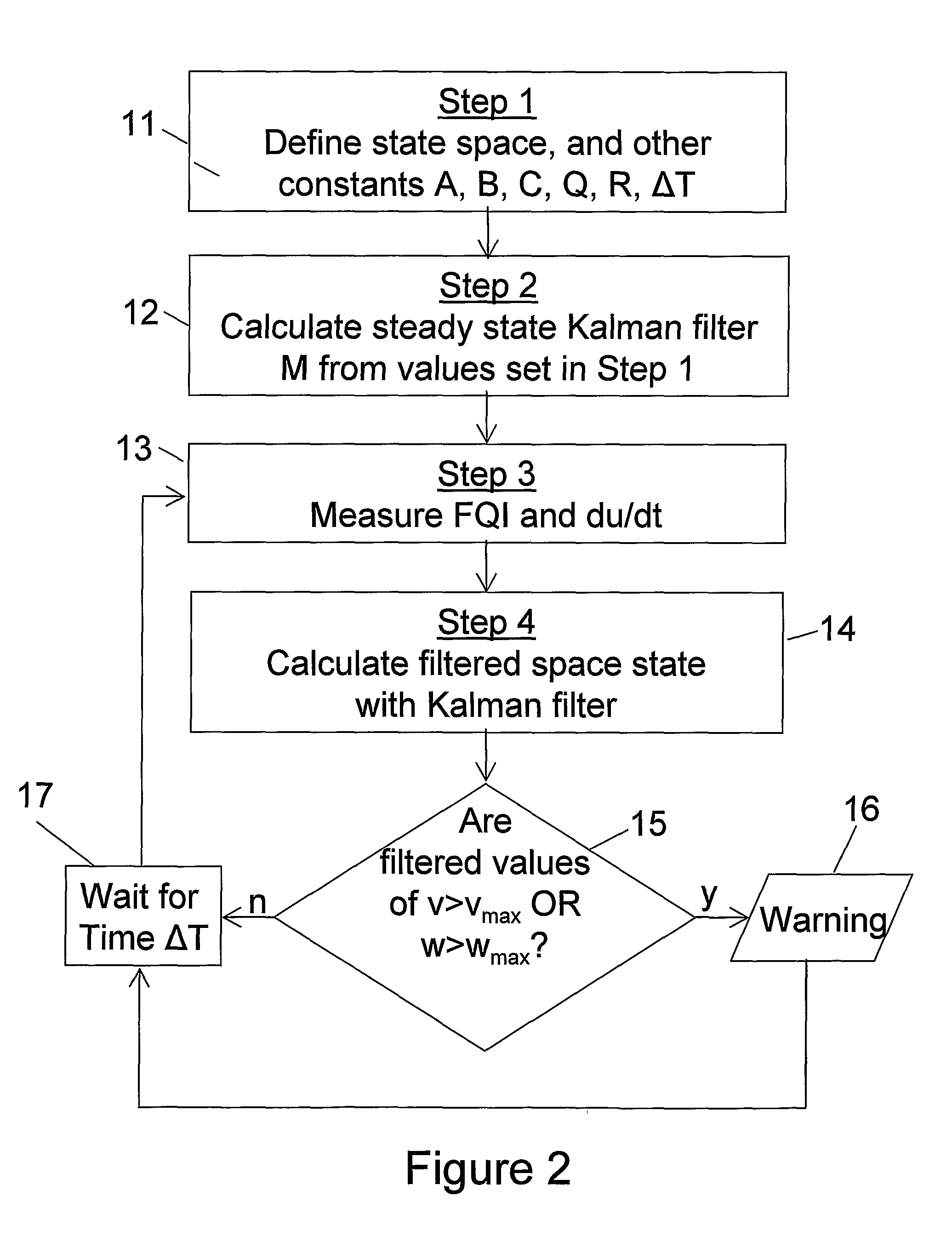Fuel Leak Estimator
a technology of fuel leak estimator and fuel tank, which is applied in the direction of volume measurement apparatus/methods, liquid/fluent solid measurement, relative volume flow measurement, etc., can solve the problems of fuel tank leakage, improper maintenance, improper manufacture, etc., to facilitate detection, facilitate detection, effective and improved method of detecting fuel leakag
- Summary
- Abstract
- Description
- Claims
- Application Information
AI Technical Summary
Benefits of technology
Problems solved by technology
Method used
Image
Examples
Embodiment Construction
[0056]FIG. 1 shows an embodiment of the fuel flow monitoring system. In this particular case, the fuel flow monitoring system is provided to monitor the fuel levels in a single fuel tank in an aircraft, the fuel tank supplying fuel to a single engine. The fuel flow monitoring system comprises a processor 1, which is formed as part of the fuel system monitoring and management system of the aircraft. The processor is arranged to receive electronic input signals including a measured fuel flow input 2 and a measured fuel quantity indication (FQI) input 3. A fuel flow sensor is located in the fuel feed line from the aircraft fuel tank to the aircraft engine and measures the rate of fuel du / dt flowing along the feed line. The fuel flow sensor thus provides the fuel flow input 2. The fuel quantity input 3 is derived by a fuel quantity processor (not shown) from several different inputs from fuel level probes located at various locations in the aircraft fuel tank in consideration of the par...
PUM
 Login to View More
Login to View More Abstract
Description
Claims
Application Information
 Login to View More
Login to View More - R&D
- Intellectual Property
- Life Sciences
- Materials
- Tech Scout
- Unparalleled Data Quality
- Higher Quality Content
- 60% Fewer Hallucinations
Browse by: Latest US Patents, China's latest patents, Technical Efficacy Thesaurus, Application Domain, Technology Topic, Popular Technical Reports.
© 2025 PatSnap. All rights reserved.Legal|Privacy policy|Modern Slavery Act Transparency Statement|Sitemap|About US| Contact US: help@patsnap.com



